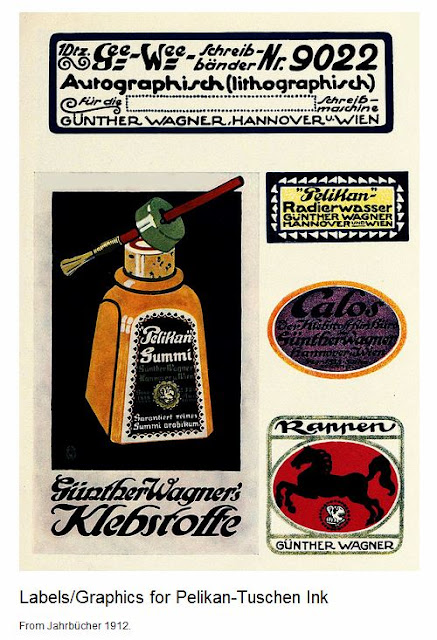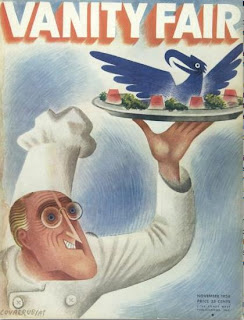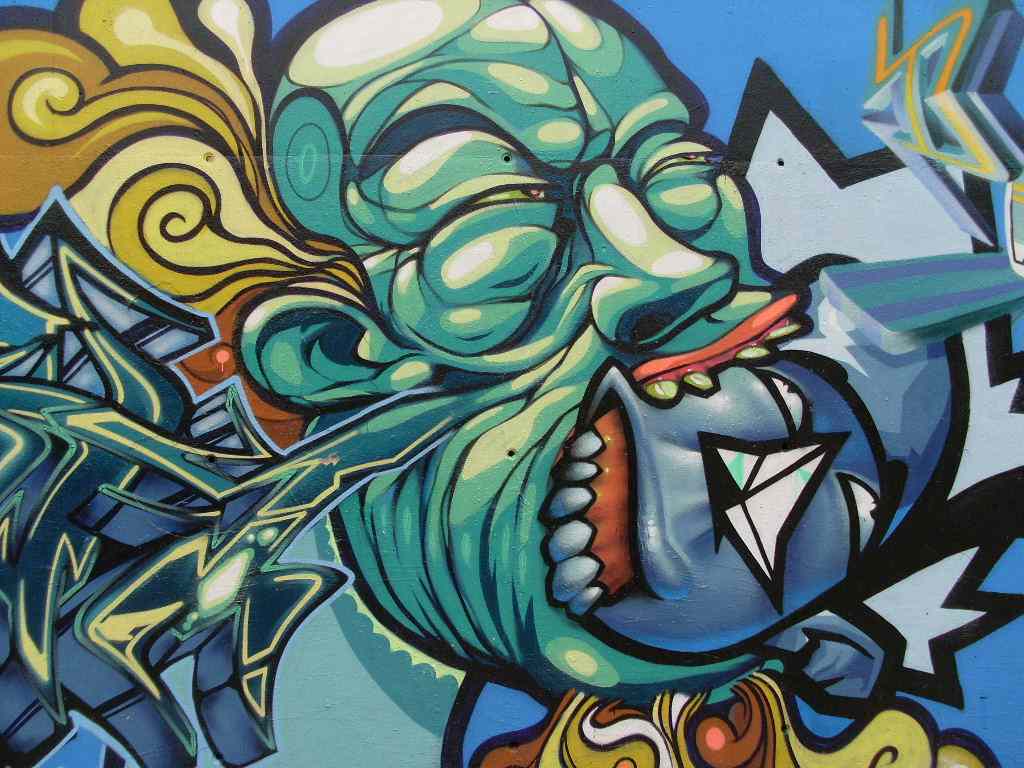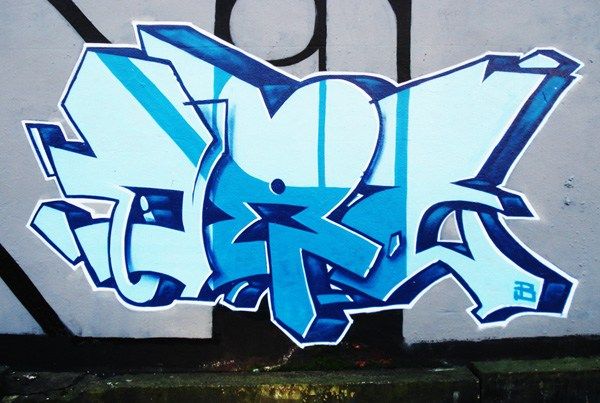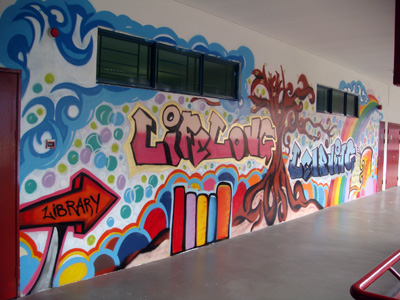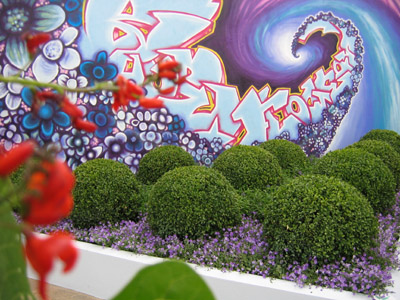The great artists such as Toulouse-Lautrec, Eugene Grasset, Paul Berthon, Jules Cheret, Theophile Alexandre Steinlen, Pierre Bonnard, Georges Ripart, and others created artistic posters that solidified the foundations for contemporary graphic artists. The American graphic artists, such as Louis Rheade, William Schumacher, Frank Hazenplug, George Wharton Edwards, and a host of others, were also publishing their works in various periodicals and books, such as "The Century Magazine" and the "Lothrop Publishing Company." The positive impact of the colourful and eye-catching posters which represented various products and created demand encouraged corporations to invest heavily in advertisement. They spared no expense competing against each other and increase their market share through their advertising posters.





With the development of a consumer society and mass production, the role of advertisement exploded in the 20th century - particularly in the United States. The impact of the advertisement was so immense and significant that in the 1920s Albert Lasker, an ad agency executive claimed that �We are making a homogeneous� people out of a nation of immigrants .
The technological developments in printing created new possibilities for layout; defined as the art or process of arranging printed or graphic matter on a page. The organization of content is probably one of the most important and influential aspects of any good magazine, poster, and web design. A clean and efficient layout would help the message of the advertisement to be conveyed more effectively and more forcefully.

Different approaches to page layout for advertising radio (first row of images) and television sets (second row) in the early 20th century
Doyle Dane Bernbach was an ad agency started in 1949 by Ned Doyle, Mac Dane, and Bill Bernbach. Starting with only 13 employees this small agency became an advertising powerhouse in the 1950s, and is now known as DDB Worldwide and continues to be a key player in the global realm of advertising. In the 1950s, the automobile industry was a stronghold of companies that mass produced large and luxurious cars. They relied on �show-off� and " keep up with the Joneses" marketing. Volkswagen, a brand that Adolf Hitler had touted during the 1930s as the �people�s car," was small and austere.
The DDB decided to represent the modest Volkswagen with advertisements that emphasized their economical practicality. Perhaps counter-intuitively. the agency boasted that their clients' cars were ugly, small and had barely changed in years. The campaign targeted devotee followers who, in the eyes of marketers, shunned ostentation and took pride in their modesty. One famous ad invited buyers to �Live Below Your Means,� presenting a car for people who could afford to spend more but chose restraint. With this in mind the layout of the Volkswagon ads was represented by minimalist and monochrome images. Pictured below the stark contrast between the Volkswagon and the typical automobile advertisements is obvious. It's interesting to note that the typical automobile ads usually contain a prosperous family in a colourful setting.

Modern artistic car posters
Modern Layouts, and Alexey Brodovitch
Fortunately Diaghilev's Ballets Russes offered him a job to paint the stage sets. Diaghilev's philosophy of the lack of boundaries between different arts influenced him, and soon he entered a poster competition which searched for the most innovatory design to announce an upcoming ball. He won the first prize, beating Picasso who was also in the competition. This was the start his career as a graphic designer.
Brodovitch also won medals for fabric, jewelry and display design at the International �Art Deco� Exhibition of Decorative Arts. Soon he was in great demand, designing restaurant d�cor, posters and department store advertisements. His designs was becoming noted because of their bold and refreshing sense of adventure. For instance when he was asked by Maximilien Vox, an ad agency, to design for Martini Vermouth, he did not hesitate to employ an avant-garde idea, inspired by constructivist style of El Lissitsky, using geometric forms and basic colors. He migrated to the US in 1930 to instruct design classes at Philadelphia College of Art, where he trained students in the fundamentals of European design, while working as a freelance illustrator in Philadelphia and New York. When Carmel Snow, who had been recently appointed as the editor of Harper�s Bazaar, saw his graphic design portfolio in 1934, he immediately offered him the post of Harper's art director. Brodovitch accepted the offer and by acting as the ambassador of European modernist ideas he revolutionized magazine design.
Corporations in the US, particularly after the economic crisis of 1929, were reluctant to experiment with radically new ideas. In spite of their reluctance Brodovitch experimented with a radically simplified, European �modern� graphic design. Understanding the value of visual communications, he gave photography the central role in the magazine layout. His approach to layouts was characterized by emphasizing on large areas of white space, in conjunction with elegant compositions of type and imagery, while creating an overall sense of rhythmic dynamism. Brodovitch believed that type and photographs are equal in their power. A single letter magnified to the size of a page is just as provocative and inspiring as a photo of a model wearing the latest fashions.

He cropped his photograhps, often off-center, brought them to the edge of the page, integrated them in the whole. He used his images as a frozen moment in time and often worked with succeeding pages to create a nice flow trough the entire magazine. This brought a new dynamism in fashion layouts.This was something very new and created an artistic flair to the published media. Brodovitch redefined the role of art director in a publication. Not only he supervised and designed the layout of photographs, illustrations and type on the page; but also actively searched for new talents, suggested various artistic concepts, and commissioned all forms of graphic designs. Among his proteges in New York were Irving Penn, Leslie Gill, Richard Avedon and Hiro.
In 1949 Brodovitch became director of Portfolio. He used only type on the cover, which was unusual for American magazines at that time. He wanted to create a magazine unlike any other. The first issue of the magazine was filled with a range of design influences that formed Brodovitch's creative vision. But as the high cost magazine with a small advertising revenue Portfolio ended up folding after just three issues.
Brodovitch�s personal life was an unhappy one. Because of his heavy drinking and frequent absents Harper's fired him in 1958. His wife Nina died in the same period. A series of house fires in the 1950s destroyed not only his country retreat but also his paintings, archives and library. He died in 1971 in a small village in southern France where he had spent the last three years of his life. Brodovitch�s innovative style was continued by art directors including Henry Wolf (at Esquire and Harper�s Bazaar) and Otto Storch (at McCall�s) .
Dr. Mehemed Fehmy Agha
Mehemed Fehmy Agha Agha (1896- 1978) was born in Russia into a Turkish family. He studied arts at the Academy of Fine Arts in Kiev, and then entered the Emperor Peter the Great Polytechnic Institute in Czarist Russia and graduated in economics. He left Russia after the October Revolution and enrolled in the National School of Modern Oriental Languages in Paris, and received a special degree in 1923. He was a truly Renaissance man, was fluent in Russian, Turkish, German, French, Greek and English, had a strong technical and scientific aptitude, was an accomplished artist, photographer, and typographer.
In the mid- 1920s, Agha found a job as the studio chief of the Vogue headquarters at Paris, and soon was sent to Berlin as the designer of the German Vogue. Early in 1929, Conde Nast, the publisher of Vogue, whose art director Heyworth Campbell had resigned, was searching for a replacement. Casting out his net wide open into London, Paris and Berlin, eventually he interviewed Agha in Berlin. Nast was impressed by the "order, taste and invention" of what he had seen in Agha's work. According to Nast, he had numerous discussions with his staff and others in which he analyzed scores of back issues of Vogue, rival publications and foreign periodicals, in order to expound his theories, convictions and prejudices in the matter of makeup; "And I had invariably in such s�ances�and perhaps with too great an assurance�assumed the role of teacher." However, facing Agha in the interview Nast could not assume the role of a teacher anymore; "since (Agha) had at our extended interview, assumed that role himself�after relegating me politely to the dunce's corner where apparently, he thought, I really belonged." Agha migrated to the US to assume the art direction at Vogue, and it did not take long for him to distinguish himself as an extraordinary art director, and he became known as Dr. Agha.
Agha radically redefined the role of the art director at every level. He fully integrated the layout process of the Vogue with the editorial process, in which design was playing a key and fundamental role. He drastically reformed the concepts of page layout, photography and illustration, with the help of many talented and influential artists such as Edward Steichen, Cecil Beaton, Hoyningen-Huene, Horst, Carl Van Vechten, and Charles Sheeler. Furthermore, he allowed artists like Willaumez, Pages and Carl Ericsonto to experiment with their wildest imagination and creativity. He reformed typographic style and introduced the sans serif type styles of Europe, and designed and conducted complicated engineering experiments to improve the color printing techniques. He brought the full force of European avant garde experimentation to the pages of Vogue, Vanity Fair, and House & Garden, the Cond� Nast publishing company's flagship magazines in the United States. He is described as a man of penetrating insight, unequaled wit, and at times, like the brilliant chess player he is, of dazzling intellectual wizardry.
Agha left Conde Nast in 1943 and became an active graphic and directorial consultant for numerous corporations, department stores and large publishing companies. He was deeply affected by the death of his wife in 1950. He became president of both the Art Directors Club (1935) and AIGA (1953-55). In a tribute published by PM Magazine in August 1939, William Golden wrote :
"Agha's demands seem so simple. Make something legible, present it logically and make it look somehow luxurious... in a way that he will like. So they devise not merely one version of how they think a page should look, but ten, or twenty, or forty... And for sheer productivity this method is unequalled. As for those bales of rejected layouts that have never seen the light of day; I don't think they are completely wasted. Some day, a less jaded scholar of the Graphic Arts will unearth them and discover again the amazing amount of original and exciting work that was stimulated by the man who knew too much to like anything."
A 1936 Vanity Fair double-page spread layout by Agha with photographs by Edward Steichen. This was a whole new way to use photography and layout.
Henry Wolf
Henry Wolf (1925- 2005) was born into a Jewish family in Vienna . He and his family fled the advancing Nazis in 1938, traveled to Paris where he began to study art. However, they had to leave for the United States in 1941. He entered at New York City's School of Industrial Arts, while also working in type and printing shops. After serving with an intelligence unit of the Army over the 1943-46 period he studied design and photography, with the legendary art director Alexey Brodovitch, when he he also working in a commercial art studio.
In 1951, Wolf became an art director for the State Department, designing publications and posters for overseas use, and a year later, accepted an offer from Esquire to became its art director. Using his artistic talent as a graphic designer he radically changed the image of the magazine and introduce a sense of elegance and sophistication that lasted even after his departure. He introduced thought-provoking photographic covers, combined with aesthetically pleasing typography; and a stable of modern artists, including Ben Shahn and Richard Lindner. After Harper's firing of Alexey Brodovitch as the art director in 1958, his job was offered to Wolf . After three years at Harper's Bazaar, and working with Richard Avedon, Man Ray and Melvin Sokolsky Wolf departed to start Show for A&P Heir Huntington Hartford.
He joined the leading global marketing communications company of McCann Erickson in 1965 , where he directed ad projects like Alka Seltzer, Buick, Gillette and Coca-Cola. Soon after he and ad executive Jane Trahey founded Trahey/Wolf, where Wolf assumed the role of the vice president and creative director directing ad campaigns for companies such as Xerox, IBM, Revlon, De Beers, Blackgama Mink, Charles of the Ritz, Elizabeth Arden, and Union Carbide. Finally, he launched Henry Wolf Productions, in 1971. He devoted himself to photography, film and design, for the next three decades. Wolf worked as both a photographer and a designer, creating numerous television commercials for companies like RCA, Revlon, Borghese, Olivetti and so on. He also taught graphic design at Parsons School of Designmarker in New York, as well as the School of Visual Arts and Cooper Unionmarker. He was an influential graphic designer and art director who believed; "A magazine should not only reflect a trend; it should help start it."
Henry Wolf Collection, Spread from Harper�s Bazaar, featuring photographs by Richard Avedon, undated
Otto Storch
In the days before computers editing, he invented a variety of photographic techniques to distort type and produce various special effects. For instance, to create the impression of words in the eye of an illiterate person, he placed type under a pair of glasses and photographed it to appear warped and bent. He also experimented with various typefaces including the 19th-century Victorian wood typefaces, which had been abandoned for decades. Under Storch, McCall�s transformed into a vibrant fashion pictorials designed for younger and perhaps more stylish women. Often the pictorials were photographed outdoors for a modern, more realistic look. In an interview that was reprinted in William Owen�s 1991 book Modern Magazine Design, he identified two �moments� in the preparation of a magazine which he considered �of supreme importance� to an art director: The first, Storch said, is the editorial conference that outlines the material to be presented and �the thinking behind it.� The second is the designer�s instructions to the photographer, illustrator and layout artists. �They want, just as I want, to have a clear visualization of what they are going to accomplish before they start.�
Unfortunately, his insistence on innovation, experiment and new artistic approach gave rise to the conservative McCall�s discomfort and eventually led to Storch's resignation from McCall�s in 1967 after nearly 15 years. He returned to a successful freelance career focusing on editorial and advertising photography which included the design of an impressive booklet for the Cinerama premiere of Stanley Kubrick�s 2001: A Space Odyssey in 1968.
Quentin Fiore and The Medium is the Ma/essage
Quentin Fiore was born in 1920. He is a graphic designer, who has studied at the "New Bauhaus" in Chicago. Fiore has been bold and highly creative in his art. He coauthored two books with Marshall McLuhan; the most insightful and provocative book of the 1960s; The Medium is the Massage and War and Peace in the Global Village. Fiore's typography, layout and accompanying images were superbly executed to convey McLuhan's ideas. Particularly, in the first book Fiore's images show that the characteristics of a medium in fact renders it non-neutral, and the technological means through which the information is conveyed has an effect on the human perception independent of the information content.?? The word 'Massage' in the title of the book was actually a typo by the print-setter, but when McLuhan and Fiore saw the typo they liked it since it conveyed the exact message of the book. The medium is massaging the message, and produce something which is different from its content -- perhaps very much like the way statisticians are said to massage their data to produce the results they want to show. McLuhan asserts that the media are an extension of the physical and psychic faculties of man, and outlines the effect that each medium �in itself� has on the senses. From the beginning of the book, Fiore adopted an innovative pattern for the time in which an image demonstrating a media effect was presented with a textual synopsis on the facing page. The reader experiences a repeated shifting of analytic registers�from "reading" typographic print to "scanning" photographic facsimiles�reinforcing McLuhan's overarching argument that each medium produces a different "massage" or "effect" on the human sensorium. McLuhan writes;
�How much do you make? Have you ever contemplated suicide? Are you now or have you ever been�? I have here before me�Electrical information devices for universal, tyrannical womb-to-tomb surveillance are causing a very serious dilemma between our claim to privacy and the community�s need to know. The older, traditional ideas of private, isolated thoughts and actions�the patterns of mechanistic technologies�are very seriously threatened by new methods of instantaneous electric information retrieval by the electrically computerized dossier bank�that one big gossip column that is unforgiving, unforgetful and from which there is no redemption, no erasure of early �mistakes.� We have already reached a point where remedial control, born out of knowledge of media and their total effects on all of us, must be exerted. How shall the new environment be programmed now that we have become so involved with each other, now that all of us have become the unwitting work force for social change? What�s that buzzzzzzzzzzzzzzzzzzzzzzzzzzzzzzzzing?�
Modern Newspaper Layout
In today's world it appears that paper-based journalism is in crisis. Daily newspapers are going out of business at an unprecedented rate. Over the 2006-09 period, The New York Times, The Wall Street Journal, The Washington Post, The Chicago Tribune, The Los Angeles Times and The San Francisco Chronicle have trimmed their staffs. The number of American correspondents reporting from abroad fell by 25 percent from 2002 to 2006, and only a handful of American newspapers now operate foreign bureaus. Thousands of reporters and editors have lost their jobs.
New York Times Op-Ed, Pafko at the Wall, 1992, Mirko Ilic
New York Times Op-Ed, Russia Comes Apart, 1992, Mirko Ilic
It may be true that the new generation would like to take their news from the internet and their iPods, and this may be the very cause of the plight of the paper-based media. According to Pew, only 27% of those born after 1976 read newspapers, as opposed to 55% of those born prior to 1946. Nevertheless, it appears to me that there is a limit to this free downfall, and after certain point this trend would be arrested and would stabilize at some level, simply because newspapers have certain characteristics and certain feel about them that cannot be reproduced by the electronic media. Furthermore as Thomas Jefferson wrote in January 1787; �The basis of our governments being the opinion of the people, the very first object should be to keep that right, and were it left to me to decide whether we should have a government without newspapers or newspapers without a government, I should not hesitate to prefer the latter.�
Politiken, Copenhagen, Denmark
El Economista , Madrid, Spain
El Economista , Madrid, Spain
Newspaper design is more than just design it is visual communication. Newspaper designers must make the paper visually appealing to the eye, but also tell and show the importance of the story through their designs. Stories and photographs are not the only elements that convey the news to readers; good design tells a story too. The layout of a newspaper ad has also a large effect on how a viewer reads the newspaper. Normal ads can have different looks about them. The can occupy just one narrow vertical column, many columns, or they can spread over an entire page. A layout designer must balance the overall composition of the page taking into consideration the effects of various ads. Of course. the amount of space available will dictate the designer's ability to lay out text. Using a bold design, areas of contrast, and appropriate typeface, the composition should lead the reader eyes towards various parts of the page, in a harmonious and unintuitive journey. In any layout, the negative space, that is the space without any content, plays a key role in this journey. The designer style should include an appropriate amount of negative space that would support the text arrangement in the text. In summary, whether the design is simple or complex, the way the story, photos, typeface, and negative space are composed is a part of the communication package as a whole. If a page is designed poorly, the reader may miss the whole or the major part of content.�Emarat Al Youm� newspaper, Dubai
Go to the next chapter, Chapter 33 Pop Art
References
- "The Man Who Knew Too Much," by William Golden. PM Magazine. Vol. 5, no. 2 (Aug./Sept. 1939).
- Kerry William Purcell, Alexey Brodovitch, Phaidon Press (2002).
- Gabriel Bauret, Alexey Brodo-Vitch, Assouline (2005).
- Alexey Brodovitch, Portfolio #2: A Magazine for the Graphic Arts, Zebra Press (1950).
- Roger Remington and Barbara Hodik, Nine Pioneers in American Graphic Design, The MIT Press (1992).
- Andy Grundberg , Brodovitch (Masters of American Design), Harry N Abrams (1989).
- Brodovitch: Bazaar and Beyond
------------------------------------------------------------------------------------

This work is licensed under a Creative Commons Attribution-No Derivative Works 3.0 Unported License.

This work is licensed under a Creative Commons Attribution-No Derivative Works 3.0 Unported License.



